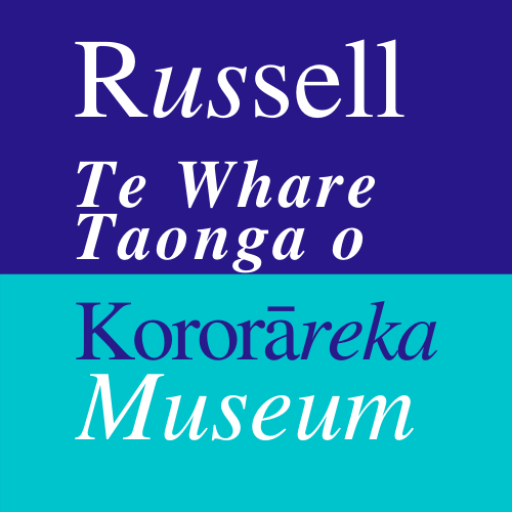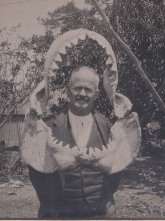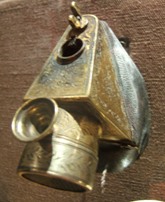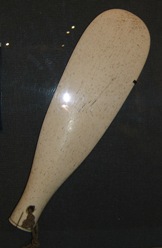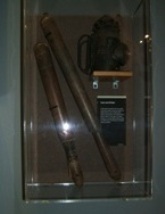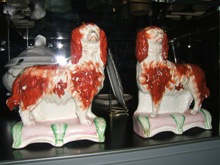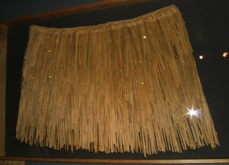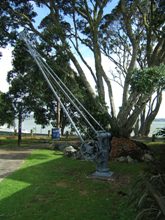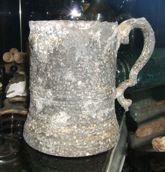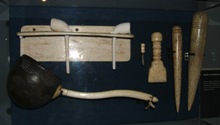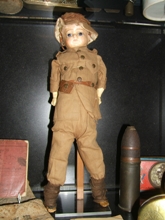Russell has been a tourist destination for more than a hundred years. The museum has a range of souvenir china including plates, cups, vases, milk jugs.
This shaving mug which is of white china with gold trim has a black and white transfer showing Russell looking south from Maiki Hill.
The Methodist Church built in 1913 has its belfry (which was removed in 1932 because it was too heavy). The wharf has two sheds which were replaced by one big one when the wharf was rebuilt in 1927. So we can probably date the china to the 1920s. On the base is Royal Wilton china so they must have been imported. The catalogue entry says they sold for 12 shillings and sixpence. The mug held boiling water and the perforated top story held soap and shaving brush.
A tourist might also buy a tour guide like Montagu Russell’s 1931 booklet and could stay in the new camping ground for 7 shillings and sixpence a week.
